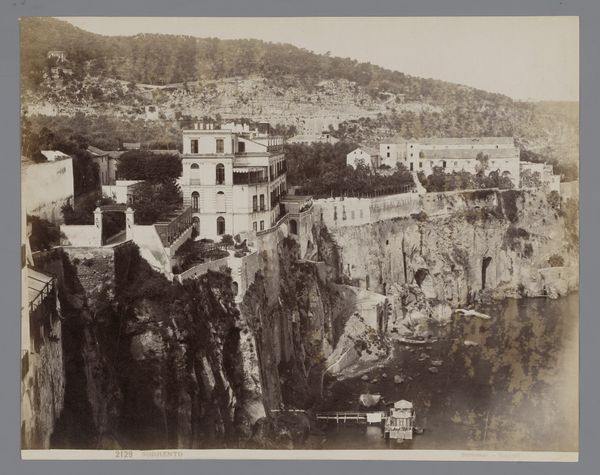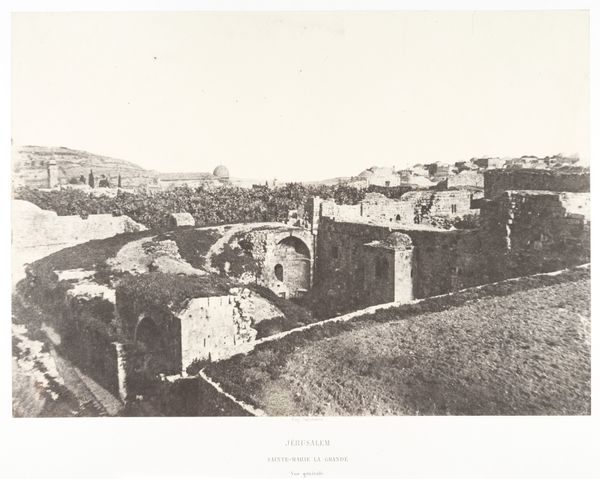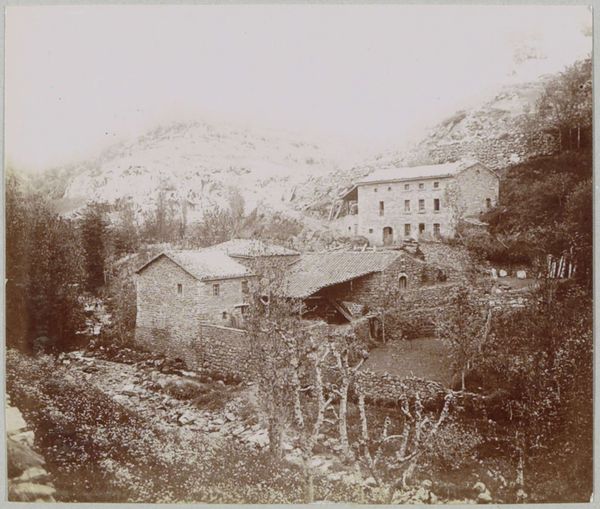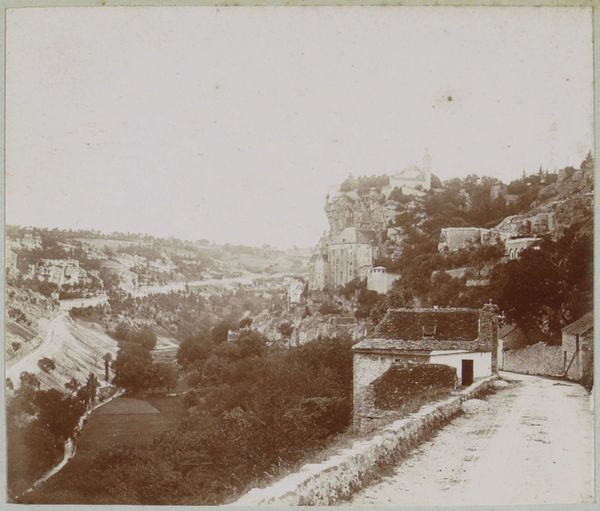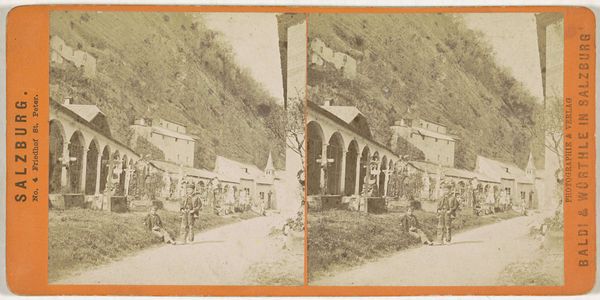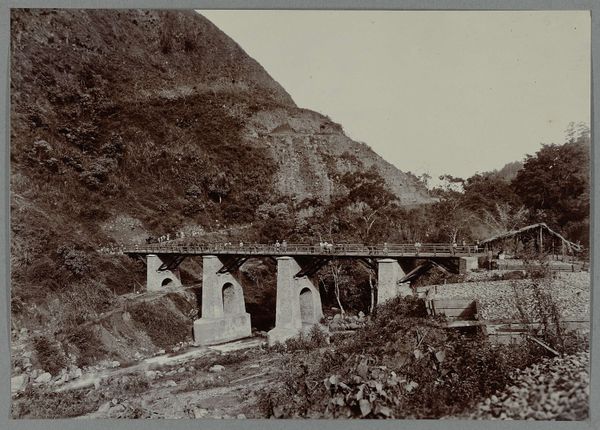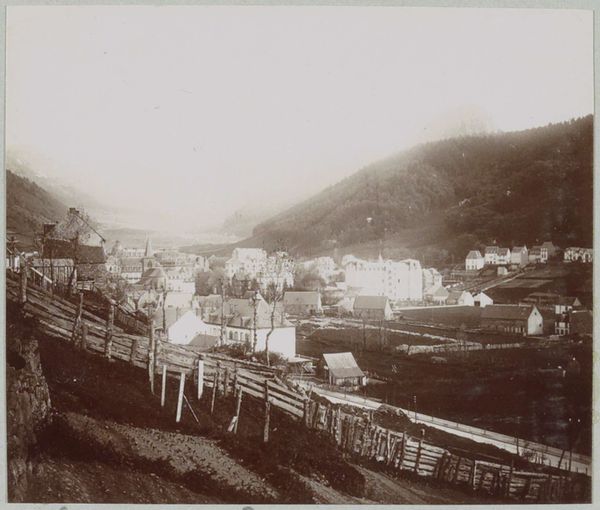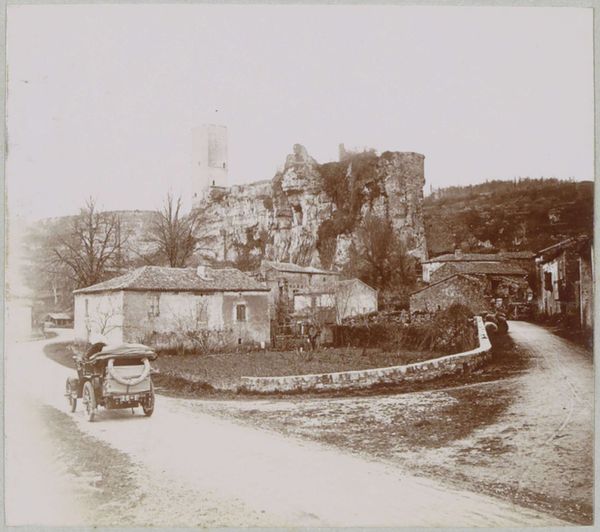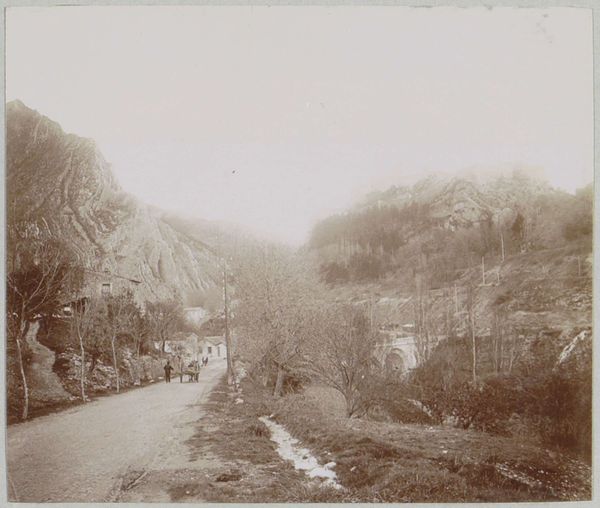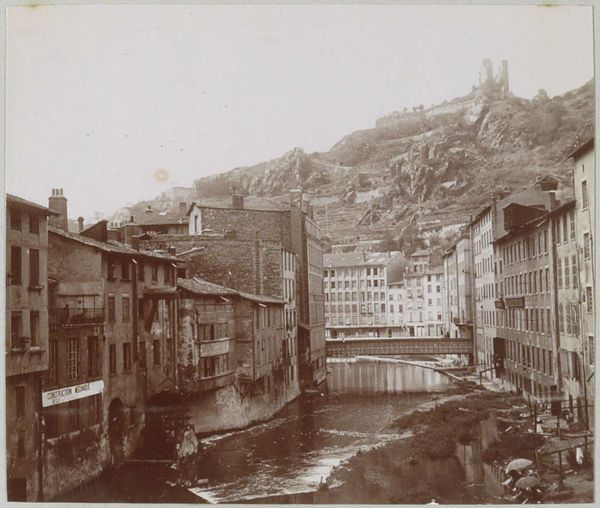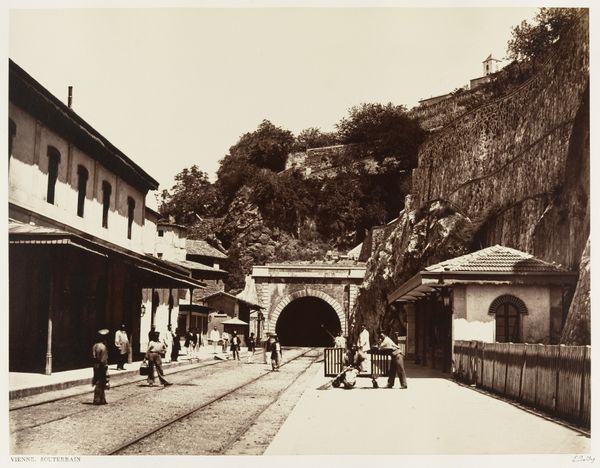
print, daguerreotype, photography, albumen-print
# print
#
landscape
#
daguerreotype
#
photography
#
outdoor scenery
#
cityscape
#
history-painting
#
albumen-print
#
realism
Dimensions: Image: 32.9 x 42.3 cm (12 15/16 x 16 5/8 in.) Mount: 46 x 60.5 cm (18 1/8 x 23 13/16 in.)
Copyright: Public Domain
Curator: Let's consider "Vienne, Souterrain," an albumen print created by Edouard Baldus between 1860 and 1862, now housed at the Metropolitan Museum of Art. What's your initial impression? Editor: A strong sense of receding space and the melancholy feeling of historical excavation. The tunnel's dark mouth framed by heavy architecture feels both inviting and forbidding. Curator: Indeed. The linear perspective is dominant, directing our gaze toward the tunnel, a vanishing point reinforced by the converging railway tracks. Note the texture contrast: the smooth rails against the rough-hewn rock face. Baldus meticulously manipulates light to enhance these juxtapositions. Editor: The tunnel undoubtedly serves as a powerful symbol. Tunnels often signify a journey into the unknown, a passage between states of being. Its presence here, nestled amidst older architecture, speaks to societal transition with the advance of technology, doesn’t it? Curator: Precisely. The structural dichotomy speaks to this; the industrial piercing through natural formations and established architecture. Note also the tonal range achieved with the albumen print process; the gradations emphasize depth and form in a visually engaging way. Editor: Also note the tiny figures. They represent a bridging of sorts too – of physical labor connecting these worlds. Their size is particularly interesting relative to the large looming edifices and the dark tunnel, rendering a somewhat insignificant sense of the human amidst larger, epochal transformations. The photograph seems preoccupied with the power of infrastructure as a driver of history. Curator: Baldus masterfully captures the texture and detail of the architectural elements, demonstrating photographic technique within a precisely ordered composition, guiding the viewer through his carefully considered arrangement of lines, shapes, and tonalities. The symbolism adds another complex layer, but let's not overlook the beauty in its pure construction. Editor: A convergence of history and innovation—the composition holds that tension beautifully. The photograph definitely captures that moment of societal anxiety about our past meeting what we believed was to be our future. Curator: A rich and thoughtful meditation on industrial progress then, presented through Baldus' acute compositional arrangements. Editor: Yes, Baldus creates something that is more than just an informational picture of a new modern convenience, something full of tension and a prescience of how that industrial might changed us culturally.
Comments
No comments
Be the first to comment and join the conversation on the ultimate creative platform.
